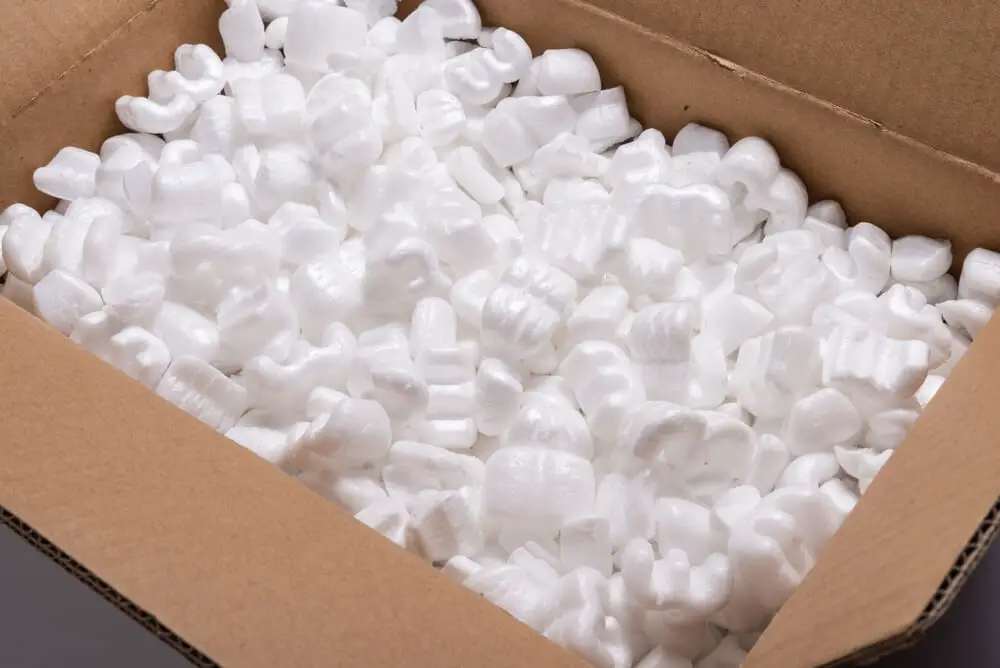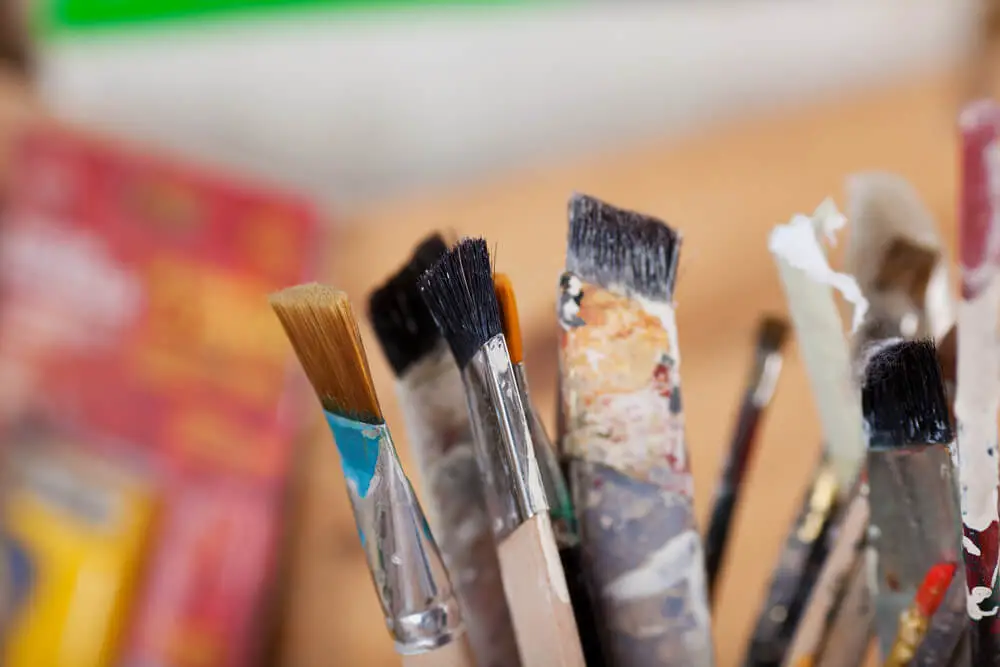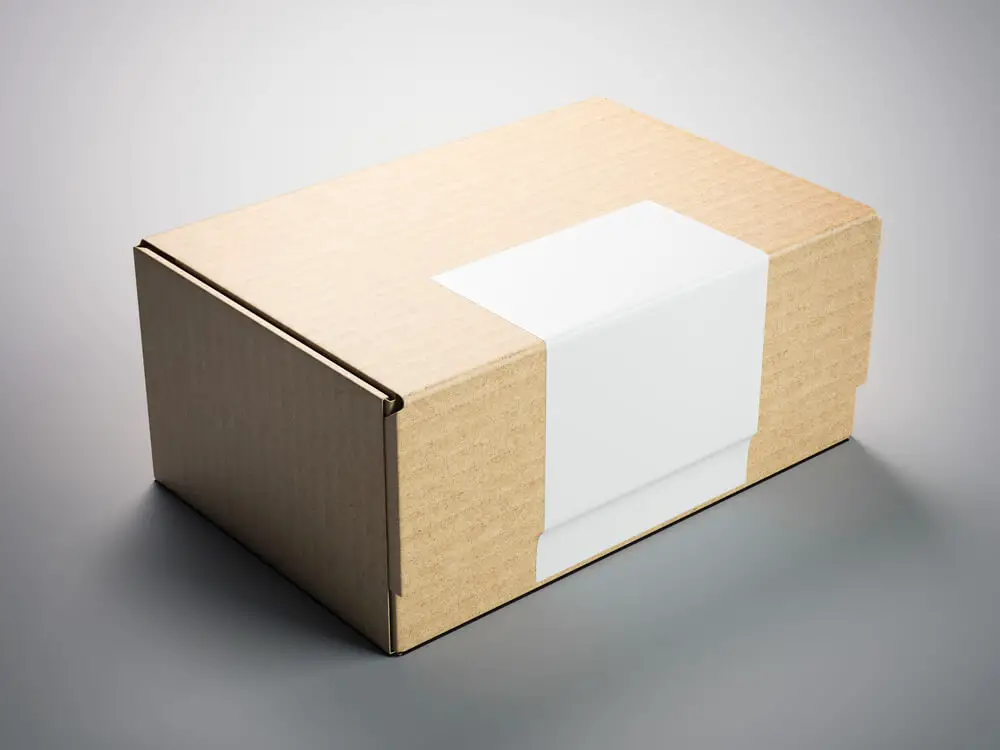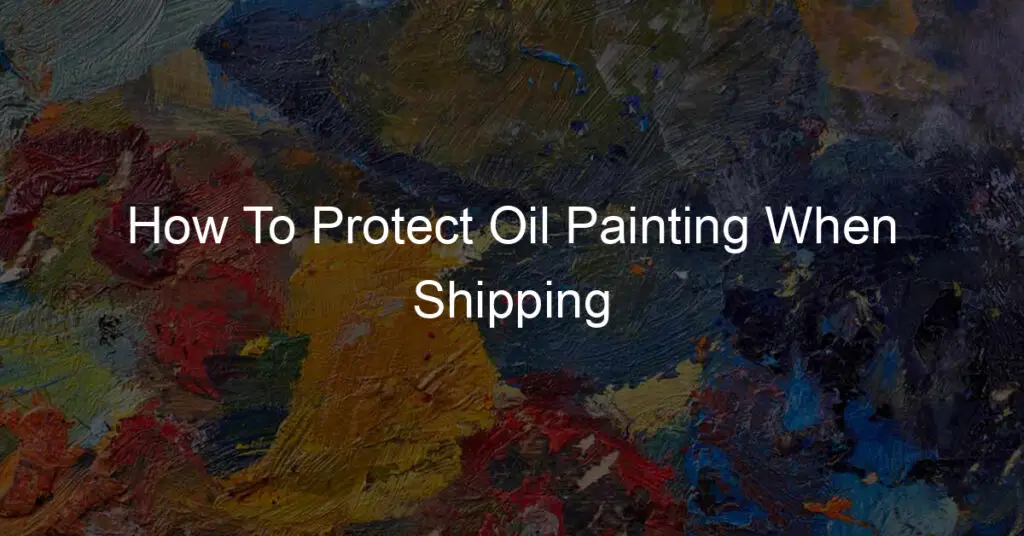Shipping an oil painting can be a daunting task, especially considering the value and fragility of the artwork. Ensuring the painting reaches its destination in pristine condition is crucial for both the sender and the recipient. In this article, we’ll discuss some vital measures that can be adopted to protect an oil painting when it’s being shipped.
To begin with, it’s essential to gather the appropriate packing materials and tools. These items play a pivotal role in safeguarding the painting against potential damage, such as exposure to moisture, extreme temperatures, and physical impact during transport. Additionally, it’s important to follow industry-standard packing techniques and protocols that have been proven effective in maintaining the artwork’s integrity.
By taking these precautions and following the tips discussed in this article, you can confidently ship your oil painting, ensuring its safe arrival. With a combination of suitable packing materials, proper handling, and reliable shipping services, your valued artwork will be well protected throughout its journey.
Choosing the Right Materials
When it comes to protecting your oil painting during shipping, selecting the right materials is crucial. The first thing you need to consider is a sturdy box or wooden crate if the painting is especially valuable or delicate. Ensure that the box is large enough to accommodate the painting as well as the necessary padding and reinforcements.
Cardboard protectors can be used to secure the corners of the painting’s frame. This not only keeps the frame intact but also prevents damage to the canvas when it’s being moved around in transit. If your painting has a glass front, you may want to use acid-free glassine paper to cover the glass. This prevents scratches and helps maintain a buffer between the painting and surrounding materials.
Next, wrap the entire painting in bubble wrap – this offers excellent cushioning against impact during transport. Be sure to tape down the ends of the bubble wrap to keep it in place.
Now, let’s talk about foam board. Cutting four pieces of foam board to the size of the painting and placing them on all sides before placing the whole assembly in the box offers an extra layer of protection. Foam inserts are also useful for maximum shock absorption, as they can be cut to follow the contours of the painting.
Additionally, using packing peanuts is a great way to fill any extra space within the box. This ensures the painting remains secure and prevents the painting from shifting during transit. When packing materials for oil paintings, investing in quality and acid-free materials will help preserve the artwork for years to come.
Lastly, consider using a shipping tube for rolled canvas paintings. Make sure the tube is durable and wide enough to hold the painting without causing damage. It’s important to note that rolled canvases should be wrapped in acid-free glassine paper before being placed in the shipping tube to prevent paint from sticking or becoming damaged.
By following these guidelines and utilizing the appropriate materials, you can confidently and securely ship your oil painting, greatly reducing the risk of damage during transit.

Preparing the Artwork
Before shipping an oil painting, you must ensure it is well-protected from potential damage during transit. Start by inspecting the artwork to look for any loose or flaking paint. If any issues are detected, carefully address them to ensure the surface is stable and secure.
Canvas paintings need specific care and protection when compared to glass and other delicate surfaces. Remove the painting from its frame, if possible, to prevent any damage during transit. Attach a sheet of acid-free paper or glassine to the canvas, ensuring that it covers the entire surface. This will prevent any potential scratches or abrasions from damaging the paint.
Next, wrap the painting in a protective layer. This can be bubble wrap, foam, or another type of cushioning material. Secure the pad to the frame with tape, ensuring that it covers the entire piece, including any exposed edges. Be careful to avoid applying tape directly to the painting, as it may cause damage upon removal.
To further protect against potential impacts, consider using corner protectors. These can be purchased or easily made from cardboard or foam. Place the protectors over each corner of the framed piece and secure them with tape.
Finally, if your oil painting is particularly valuable or if extra protection is desired, it’s a good idea to add a rigid board, such as foam core or cardboard, to provide additional support. To do this, cut the material to the same size as the wrapped painting and sandwich it between the protective layers. Secure it with tape or straps before placing it in its shipping container.
By following these steps, you can confidently package and ship your oil painting knowing that it is well-prepared and protected from potential damage during transit.

Packing Techniques for Optimal Protection
When shipping oil paintings, it is important to use proper packing techniques to ensure their protection during transit. This involves selecting the right materials and following the necessary steps to secure the artwork.
Begin by selecting a package of the appropriate size and strength. Heavy-duty cardboard boxes or wooden crates are recommended for shipping valuable paintings, as they provide better protection against damage. Make sure the package is large enough to accommodate the painting, along with additional padding and insulation.
To secure the painting inside the package, place a sheet of foam board or cardboard on both the front and back surfaces of the painting. This will help prevent any direct pressure from damaging the painted surface and will also provide a stable base for wrapping the artwork.
Next, wrap the entire painting in bubble wrap, using multiple layers to provide adequate cushioning. Make sure to wrap the edges tightly and tape the bubble wrap in place to prevent it from shifting during transit. For paintings with a particularly high value, you may consider using a combination of bubble wrap and foam padding for extra security.
Once the painting is wrapped, place it inside the chosen package. If there is any empty space inside the box or crate, fill it with additional cushioning materials such as foam peanuts or more bubble wrap. This will prevent the painting from moving around inside the package and reduce the risk of damage resulting from impacts or pressure during shipping.
Finally, mark the package as “Fragile” and clearly indicate which side is the top. This will help ensure that the package is handled with care during transit, minimizes the risk of damage and increases the likelihood of your oil painting arriving intact and in excellent condition.
By following these packing techniques, you can take the necessary steps to protect your oil paintings and prints when shipping, ensuring they arrive at their destination safely and in perfect condition.
Addressing Shipping Specifics
When preparing to ship an oil painting, it’s crucial to address specific shipping aspects to ensure the artwork arrives safely and securely. Begin by obtaining accurate dimensions and weight of the packaged painting. Most shipping carriers have size and weight limitations, so keep that in mind while choosing a courier or post office. Accurate dimensions and weight directly impact shipping costs and customs requirements when dealing with international shipments.
Choose a reliable carrier that specializes in handling fragile items, whether it’s a courier or local post office. Make sure to research their handling, security, and damage protocols. Take the time to inquire about their insurance policies for high-value items in case of any unforeseen circumstances.
When labeling your package, create easy-to-read shipping labels that include a return address. Attach the labels to the parcel so they won’t fall off during transit. In addition to the shipping labels, it’s crucial to place “Handle with Care” and “Fragile” caution stickers on the package. This alerts the carrier to handle your painting with extra care, reducing the risk of damage.
International shipments require attention to customs requirements. Double-check the destination country’s import regulations and attach the appropriate customs forms and documentation to the package. Always provide a detailed and accurate description of your painting on the forms to avoid customs delays and additional fees.
Keep track of your painting throughout its journey by utilizing your carrier’s tracking services. This helps you stay informed about the location and status of your painting and provides peace of mind.

Mitigating Risks and Preventing Damage
When shipping oil paintings, it is crucial to take proper precautions, as they are delicate items that can be easily damaged. Furthermore, moisture damage and other external factors can lead to expensive losses. Implementing the right shipping methods and techniques can significantly mitigate risks and prevent damage while transporting artwork.
Firstly, avoid using shredded paper or packing peanuts as a filler inside the package, as these materials can generate dust and friction, potentially harming the painting. Instead, use acid-free tissue paper for cushioning and protection.
To prevent moisture damage and humidity-related issues, consider wrapping the artwork with an archival-grade glassine paper or acid-free plastic. This will serve as a barrier against water and other moisture-related threats during transit.
For added security and cushioning, use bubble wrap or foam board to envelop the painting. Ensure that the front, back, and sides are thoroughly padded, with a particular focus on the corners, which are more prone to dents and impacts.
When selecting a box for shipping, opt for a double- or triple-wall cardboard box that is sturdy and robust. The box should be large enough to accommodate the artwork, allowing for cushioning materials on all sides. Reinforce the box’s seams and edges using high-quality packing tape to enhance its rigidity and strength.
Shipping carriers often provide options for insurance coverage, which is highly recommended when transporting expensive and delicate items like oil paintings. This coverage can provide a financial safety net in case of damage or loss during transit.
Lastly, choose a reputable shipping carrier with a proven track-record for handling artwork, as they will have the necessary experience and resources to ensure your oil painting’s safe and successful journey.
Packaging Options for Different Types of Paintings
Shipping oil paintings safely is important for preserving their quality and ensuring they arrive at their destination without damage. A variety of packaging options are available to cater to the needs of different types of paintings, including framed and unframed oil paintings on canvas.
Framed oil paintings require extra care and protection when shipping to prevent the frame from breaking or the glass from shattering. To protect a framed painting, follow these steps:
- Wrap the frame with glassine or acid-free paper to provide a barrier against dust and moisture.
- Add a layer of bubble wrap or foam padding to the front and back of the painting to protect the surface and frame from impact.
- Use corner protectors or cardboard pieces to secure the corners of the frame and prevent damage.
- Place the painting in a sturdy shipping box, ensuring there is ample cushioning material like packing peanuts or bubble wrap to prevent movement during transit.
Unframed oil paintings, including rolled canvases, also need careful packaging to prevent damage while shipping. Here’s a guide to follow for unframed paintings:
- If the painting is on a stretched canvas, wrap it with glassine or acid-free paper to protect the surface from dust, moisture, and potential scratches.
- In the case of rolled canvas paintings, roll them with the painted side facing out to avoid creases in the artwork and place them into a protective plastic sleeve.
- Use bubble wrap or foam padding to provide additional protection, ensuring that sharp objects or compression during transit do not harm the painting.
- For rolled canvases, use a sturdy mailing tube, making sure to use bubble wrap or packing paper to fill any empty space and prevent the canvas from shifting.
- For stretched canvas paintings, choose a box that provides enough padding and support, using cushioning material between the painting and the box to avoid any movement.
By following these packaging guidelines, you can ensure the safe and secure transportation of your oil paintings, whether they are framed or unframed, on stretched or rolled canvas.
Securing the Package

When preparing to ship an oil painting, it’s essential to secure the package properly to ensure its safe arrival. Utilize packing tape, packaging tape, or artist tape for this purpose. These tapes provide strong adhesion, keeping the package tightly wrapped and free from tears or punctures.
Start by cutting sheets of cardboard large enough to cover the entire painting surface, including the frame. Place a sheet on the front and back of the painting to protect it from any impact or pressure. If the painting has any protruding elements, such as glasses, ensure the cardboard sheets do not press against them and cause damage.
Next, use the chosen tape to adhere the cardboard sheets together, sealing the edges tightly. Be cautious not to let the tape come into contact with the painting itself, as this could damage the art piece. The oil painting should now be sandwiched securely within the two cardboard sheets.
Additionally, it’s a good idea to add extra padding to the package by wrapping it in several layers of bubble wrap or similar cushioning material. This extra padding can help absorb any shock and protect the painting even further during transit. Secure the padding with more tape, and ensure all edges and corners are fully covered and sealed.
When selecting a shipping box, the dimensions should be slightly larger than the oil painting package you’ve created. This will allow for additional padding inside the box, preventing any damage from movement during shipping. Place the painting inside the box and fill any empty space with packing material, such as crumpled paper or foam peanuts. This will prevent the painting package from shifting during transportation.
Once the painting package is snugly housed within the shipping box, secure the box using sturdy packaging tape. Ensure all flaps, seams, and openings are sealed tightly to prevent any foreign objects from entering or the contents from spilling out. Double-check and reinforce any weak or vulnerable areas with extra tape if necessary.
By following these guidelines and taking care in securing the package, you can be confident that your oil painting will arrive at its destination in pristine condition.
Selecting the Best Shipping Carrier
When it comes to shipping a painting, especially an oil painting, choosing the right carrier is crucial to ensure its safe delivery. A reliable and knowledgeable courier will handle your artwork with care, minimizing the risk of damage during transit.
One of the first things to consider when selecting a shipping carrier is their experience and reputation in handling art shipments. Research different carriers and look for reviews from artists or galleries who have previously used their services. A carrier with a proven track record for shipping paintings will likely be a safer option.
Additionally, inquire about the carrier’s insurance coverage. Accidents can happen during the shipping process, so it’s important to choose a courier that offers comprehensive insurance to protect your painting in case of any damages or loss. Be sure to understand the extent of their coverage and any exclusions that may apply.
When shipping an oil painting, special attention must be given to the packaging. Some carriers may offer packing services, but it’s essential to verify if they are familiar with the proper methods for packing artwork. Ideally, the carrier should use soft packaging materials to cushion your painting and minimize movement during transit. If you prefer to pack the painting yourself, ask the carrier for their recommendations on how to best protect your artwork.
Moreover, consider the shipping speed and tracking options provided by the carrier. A faster shipping option may reduce the risk of damage, as the painting will spend less time in transit and be subject to fewer handling events. Tracking services are also important for monitoring the progress of your shipment and ensuring the delivery is on schedule.
Finally, compare the costs among different carriers. While price should not be the main factor in choosing a shipping partner, it’s still worth considering, especially if you’re on a budget or shipping the painting internationally. Keep in mind that a lower price may sometimes come at the expense of lesser quality service or inadequate insurance coverage.
By carefully evaluating your options and selecting a reliable, experienced shipping carrier, you can feel confident that your oil painting will reach its destination in pristine condition.
Conclusion
Properly protecting an oil painting during shipping is crucial to ensure its safe arrival and to preserve its quality. Following the steps provided in this article will help minimize any potential damages that could occur during transit.
First, remember to use acid-free materials when wrapping and packing the painting. This will prevent any chemical reactions which might compromise the integrity of the artwork. Additionally, utilizing glassine paper and bubble wrap will provide a solid barrier to dust, moisture, and minor impacts.
Next, ensure that you use a sturdy, appropriately sized shipping container for the painting. Reinforce the container’s corners if needed, and make sure to fill any voids with packing materials to prevent the painting from moving during shipping. A good choice might be foam wedges, packing peanuts, or crumpled kraft paper.
Lastly, consider labelling the package with “Fragile” or “Handle with Care” stickers to make handlers aware of the delicate nature of its contents. Including additional details, such as “Do Not Stack” or “This Side Up,” can further help to mitigate risks associated with the logistics process.
By carefully following these steps, you can confidently ship your oil painting knowing that you have taken the necessary precautions to protect it during transit. Happy shipping!
Frequently Asked Questions
What is the best way to package an oil painting?
To package an oil painting for shipping, first, ensure the paint is dry. Wrap the painting in acid-free glassine paper, followed by bubble wrap, paying extra attention to the corners. Place it in a custom-sized cardboard box and fill any voids with packing peanuts or foam.
What materials are needed for shipping unframed oil paintings?
When shipping unframed oil paintings, you will need acid-free glassine paper, bubble wrap, a custom-sized cardboard box, packing peanuts or foam, and packing tape to secure the package.
What precautions are necessary when packing framed art?
For framed art, avoid using packing materials that may cause scratches on the frame or glass. Wrap the entire frame with glassine paper before adding bubble wrap. Use corner protectors and place the wrapped piece inside a custom-sized box. Fill any empty spaces with foam or packing peanuts.
How can we ensure the safety of canvas paintings during shipping?
For canvas paintings, remove any loose particles and dust before packing the artwork. Wrap the canvas in acid-free glassine paper, followed by bubble wrap, and place it in a custom-sized box with adequate padding. Consider a wooden crate for extra protection if the canvas is exceptionally valuable or fragile.
What steps are needed to ship a very large painting?
To ship large paintings, use wooden crates or custom-built boxes for maximum protection. Ensure proper padding using foam or packing peanuts and secure the painting with straps if possible. You might also want to consider hiring a professional art shipping company for particularly valuable pieces.
How can you cover a painting effectively for shipping?
Cover the painting with acid-free glassine paper to protect it from moisture and dust. Wrap the painting with bubble wrap, providing extra layers on the corners. Use corner protectors, if possible, for additional support and protection. Finally, place the art in a custom-sized box, and fill empty spaces with packing materials like foam or packing peanuts.


















